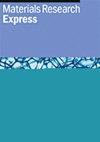揭示高分子量聚乙二醇和超塑化剂化学成分对内固化砂浆的新鲜度、机械性能和微观结构性能的综合影响
IF 2.2
4区 材料科学
Q3 MATERIALS SCIENCE, MULTIDISCIPLINARY
引用次数: 0
摘要
在高层建筑和干旱地区,传统的水养护方法存在局限性,因此有必要采用其他水化策略。在高强度混凝土中使用内部养护剂可以有效缓解蒸发,促进混凝土中水泥水化的增强。然而,由于超塑化剂是高强度混凝土中的必需成分,因此需要研究内部养护剂与超塑化剂的兼容性。本研究调查了在砂浆混合料中使用聚乙二醇(PEG)-PEG 4000 和 PEG 6000 与两种不同系列的超塑化剂(聚羧酸醚(PCE)和磺化萘甲醛(SNF))进行内部养护(IC)的功效。共制备了十种混合料,对每种混合料的样品进行了标准水固化、室内固化和内部固化。研究结果表明,PEG 6000 和 PEG 4000 与基于 PCE 的超塑化剂在优化剂量下的结合应用是一种新颖的方法,为直接应用于砂浆混合料以满足机械性能和耐久性要求提供了广阔的前景。优化后的集成电路砂浆混合料在机械性能和耐久性能方面与传统固化的混合料相当,甚至更胜一筹。这项研究证明了 PEG 6000-PCE 组合作为集成电路剂在改善新鲜和硬化性能方面的潜力,为具有挑战性的建筑环境提供了一种可行的替代方案。我们有必要进一步研究集成电路砂浆在大型项目中的长期性能和经济可行性。本文章由计算机程序翻译,如有差异,请以英文原文为准。
Unveiling the combined influence of higher molecular weight polyethylene glycol and superplasticizer chemistry on fresh, mechanical, and microstructural performance of internally cured mortar
The limitations of conventional water curing in tall structures and arid regions necessitate alternative hydration strategies. Use of internal curing agents in high strength concrete can effectively mitigate evaporation and promote enhanced cement hydration in the concrete. However, because the superplasticizer is a required component in high strength concrete, compatibility of the internal curing agent with superplasticizer needs to be investigated. This study investigates the efficacy of internal curing (IC) using polyethylene glycols (PEGs)–PEG 4000 and PEG 6000, in conjunction with superplasticizer from two different families, polycarboxylate ether (PCE) and sulphonated naphthalene formaldehyde (SNF) in mortar mixes. A total of ten mixes were prepared for which samples from each mix were exposed to standard water curing, room curing, and internal curing. The research outcomes reveal a novel application of PEG 6000 and PEG 4000 in conjunction with PCE-based superplasticizers at optimized dosages, presenting a promising avenue for direct implementation in mortar mixes to meet both mechanical and durability prerequisites. Optimized IC mortar mixes displayed comparable or superior mechanical and durability performance to conventionally cured counterparts. This study demonstrates the potential of PEG 6000-PCE combinations as IC agents for improved fresh and hardened properties, offering a viable alternative for challenging construction environments. Further research is warranted to explore the long-term performance and economic feasibility of IC mortars in large-scale projects.
求助全文
通过发布文献求助,成功后即可免费获取论文全文。
去求助
来源期刊

Materials Research Express
MATERIALS SCIENCE, MULTIDISCIPLINARY-
CiteScore
4.50
自引率
4.30%
发文量
640
审稿时长
12 weeks
期刊介绍:
A broad, rapid peer-review journal publishing new experimental and theoretical research on the design, fabrication, properties and applications of all classes of materials.
 求助内容:
求助内容: 应助结果提醒方式:
应助结果提醒方式:


